Ah, the world of commercial sandwich presses has seen a fascinating evolution. These kitchen workhorses have quietly transformed the way we savor our midday meals, bringing a touch of consistency and efficiency to the foodservice industry. From humble beginnings to the sophisticated appliances they are today, the NSF-approved commercial sandwich press stands as a testament to innovation and quality. Let’s delve into the nuances of this crucial piece of equipment and why it’s a smart investment for any foodservice operation.
The Rise of the Commercial Sandwich Press
The commercial sandwich press has quietly risen to prominence in the foodservice industry, becoming an indispensable tool for any establishment aiming to serve up hot, crispy, and delicious sandwiches. With the demand for quick-service and convenience foods on the rise, this versatile appliance has become a staple in cafes, delis, and restaurants alike.
In the fast-paced world of foodservice, efficiency is key, and the sandwich press has stepped in to streamline the sandwich-making process. It’s no longer just a gadget for the home chef; it’s a professional-grade machine that can handle high volumes and tight schedules. The evolution of the commercial sandwich press has been nothing short of remarkable, as it has adapted to the changing landscape of the food industry.
One of the key factors fueling this rise is the consumer’s insatiable hunger for sandwiches. From classic ham and cheese to gourmet creations with a variety of fillings and toppings, the sandwich has become a beloved comfort food that spans all demographics. The commercial sandwich press allows for consistent results, ensuring that every sandwich meets the high standards expected by today’s discerning diners.
The convenience of the sandwich press is undeniable. It’s a single appliance that can replace multiple steps in the sandwich-making process. Traditionally, sandwiches were grilled or toasted on a flat surface, requiring constant monitoring and attention to ensure even cooking. With a sandwich press, the cooking is done in a fraction of the time, with minimal effort and the assurance of a perfect crust on every piece of bread.
As the demand for variety in the sandwich category grew, so did the need for a machine that could handle different types of breads and fillings. The modern commercial sandwich press is designed to accommodate everything from artisanal loaves to baguettes, and from cold cuts to hot fillings. It can even cook sandwiches with fillings that require a bit of heat, like melted cheese or a warm beef patty.
In addition to its practicality, the sandwich press has also become a symbol of quality and consistency. Customers expect their food to be prepared with care and precision, and the commercial sandwich press delivers on that promise. The even distribution of heat ensures that each sandwich is cooked to perfection, with a golden-brown crust and a tender, warm interior.
The rise of the commercial sandwich press has also been driven by the need for food safety and hygiene in commercial kitchens. With its non-stick surfaces and easy-to-clean design, the sandwich press is a hygienic solution that reduces the risk of cross-contamination. This is particularly important in environments where multiple people are handling the same food items throughout the day.
Another factor that has contributed to the sandwich press’s popularity is the rise of health-conscious eating habits. As consumers seek out healthier options, many are turning to sandwiches as a versatile meal that can be customized with lean proteins, fresh vegetables, and whole-grain breads. The sandwich press allows for the creation of these nutritious sandwiches with ease, making it a favorite among health-focused eateries.
Moreover, the sandwich press has become a trendy addition to the kitchen. With its sleek design and ability to produce a variety of sandwiches, it’s not uncommon to see these presses in hipster cafes and gourmet delis. They’re not just functional; they’re also a statement piece that can enhance the aesthetic of any establishment.
The evolution of the commercial sandwich press has been a testament to innovation and the ever-changing needs of the foodservice industry. It’s a tool that has grown alongside the sandwich itself, adapting to new trends and customer preferences. From its humble beginnings to its current status as a must-have appliance, the sandwich press has become a symbol of progress in the world of foodservice. As the demand for high-quality, quick-service sandwiches continues to grow, it’s clear that the commercial sandwich press is here to stay, ready to serve up satisfaction to diners everywhere.
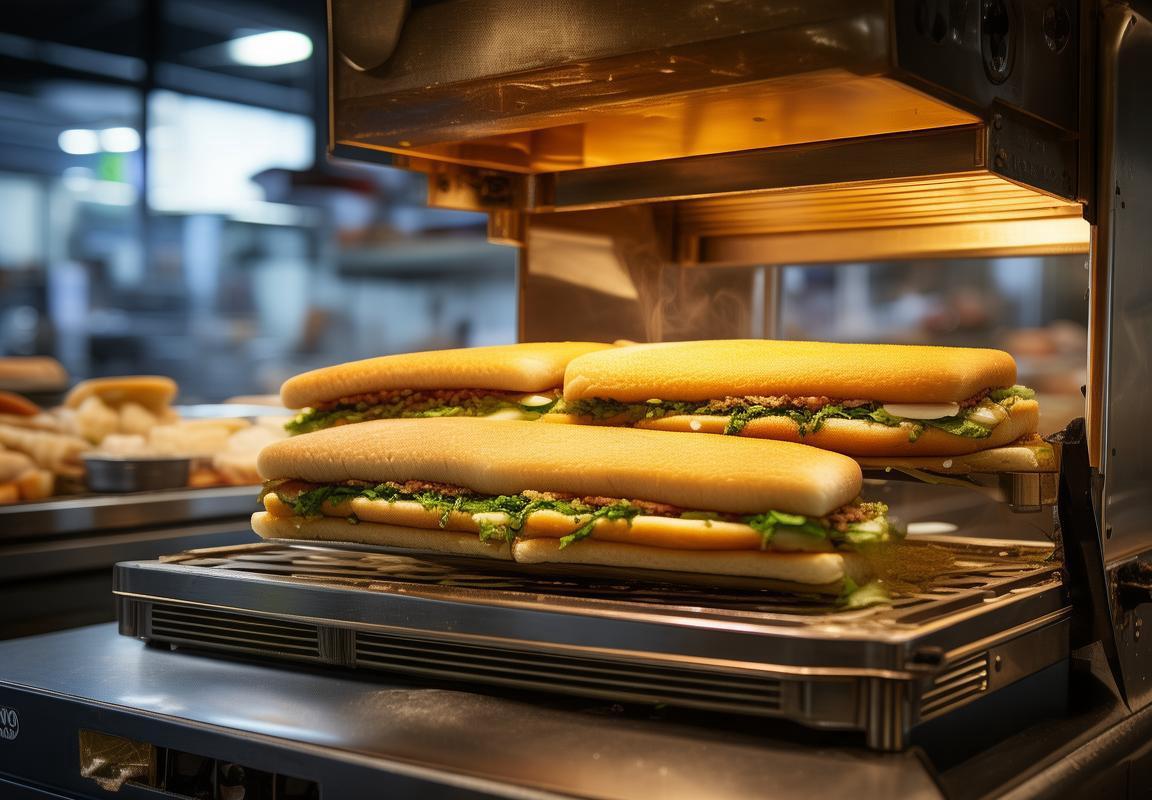
Understanding the NSF Approval
The NSF approval is a hallmark of quality and safety in the commercial kitchen equipment industry. It stands for the National Sanitation Foundation, an independent, not-for-profit organization that sets standards for public health and safety.
In the context of commercial sandwich presses, this approval signifies that the product has undergone rigorous testing to ensure it meets stringent criteria for cleanliness, performance, and safety. The process involves a thorough examination of the sandwich press’s design, materials, and manufacturing process.
Design and Construction: The NSF certification process begins with an in-depth look at the design and construction of the sandwich press. This includes evaluating the materials used, such as stainless steel, which is preferred for its durability and resistance to corrosion. The design must also allow for easy cleaning and maintenance, which is crucial in a commercial setting where sanitation is paramount.
Performance Standards: The performance of the sandwich press is another critical factor in the NSF approval. This includes how evenly the press distributes heat, ensuring that the sandwiches are cooked to perfection on both sides. The temperature control mechanisms must be reliable and accurate, as inconsistent temperatures can lead to undercooked or overcooked sandwiches.
Sanitation and Safety: One of the most important aspects of the NSF approval is the focus on sanitation and safety. The sandwich press must be able to withstand cleaning agents and not leach harmful substances into the food. This means that all components, including the heating elements and the surfaces that come into contact with food, must be made from non-toxic materials.
Testing and Certification: The actual certification process involves a series of tests that are designed to simulate real-world use. These tests include mechanical durability, thermal stability, and material integrity. The sandwich press must pass these tests to demonstrate its ability to withstand the demands of a busy commercial kitchen environment.
Compliance with Regulations: The NSF approval also ensures that the sandwich press complies with relevant health codes and regulations. This includes adherence to local, state, and federal food safety standards. The certification is not just a one-time achievement but a continuous process that requires regular audits and recertification.
Global Recognition: The NSF is recognized worldwide, which means that a sandwich press with this approval is not just compliant with U.S. standards but also with those of many other countries. This is particularly important for companies that operate in multiple markets or are looking to expand internationally.
Impact on Businesses: For businesses in the foodservice industry, the NSF approval carries significant weight. It provides a level of assurance to customers that the equipment being used is safe and meets high standards. This can be a deciding factor for operators looking to invest in reliable and high-quality equipment.
Consumer Confidence: The NSF logo on a sandwich press is a symbol of trust. It tells consumers that the product has been independently tested and meets the highest standards for food safety. This can enhance the reputation of a restaurant or foodservice establishment, leading to increased customer confidence and loyalty.
In conclusion, the NSF approval is a significant achievement for a commercial sandwich press. It not only guarantees the product’s compliance with safety and sanitation standards but also enhances its credibility and appeal in the competitive foodservice market. For operators and consumers alike, this certification is a key indicator of quality and reliability.
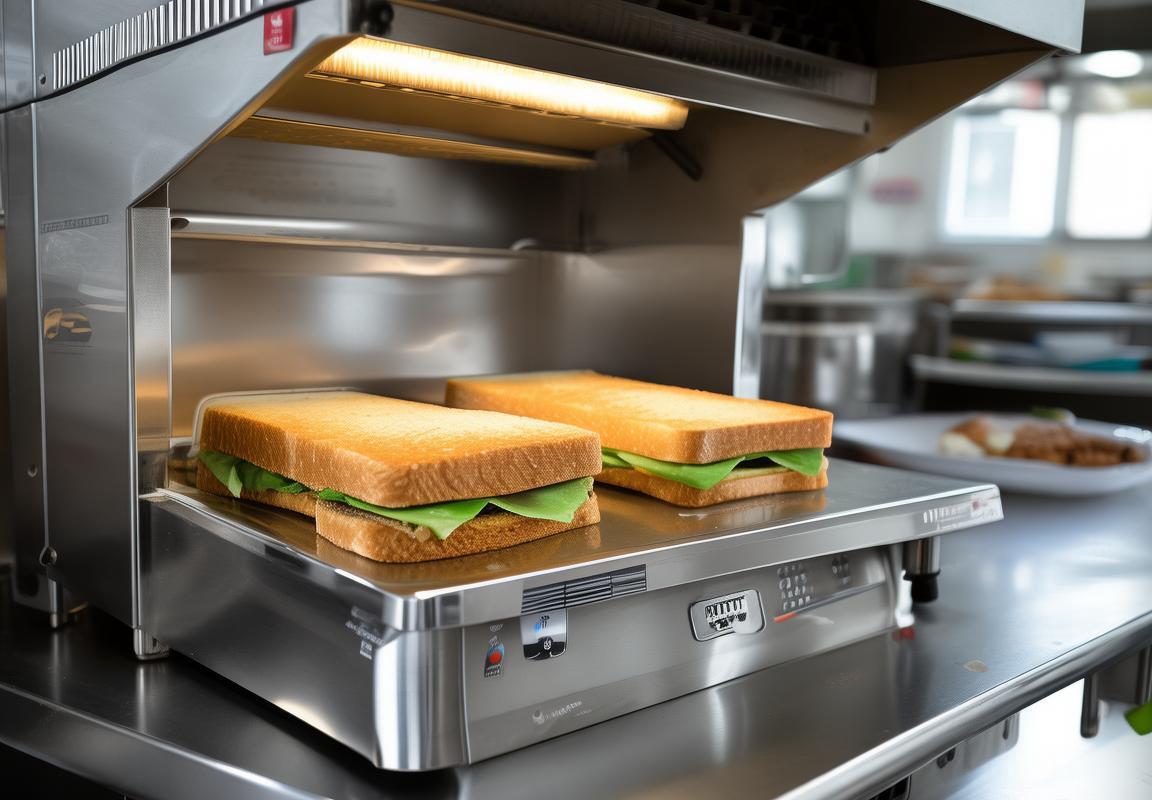
Key Features of the NSF Approved Sandwich Press
The NSF-approved commercial sandwich press has become a staple in the foodservice industry, offering a range of features that cater to both efficiency and quality. Here’s a closer look at what makes these presses stand out:
Even Heat DistributionOne of the standout features of an NSF-approved sandwich press is its ability to distribute heat evenly across the cooking surface. This is crucial for ensuring that each sandwich is cooked to perfection, with a golden-brown crust and a juicy, well-cooked interior. The precise heat distribution is often achieved through a combination of high-quality materials and advanced heating elements.
Sturdy ConstructionThe durability of a sandwich press is a key factor in its reliability. NSF-approved models are typically made from heavy-duty stainless steel, which not only withstands the rigors of a busy kitchen but also maintains its structural integrity over time. The sturdy build also ensures that the press can handle a variety of sandwich sizes and weights without bending or warping.
Adjustable Pressure ControlsA great sandwich press not only cooks evenly but also allows for adjustable pressure settings. This feature is particularly important for establishments that offer a variety of sandwich options, from light and airy to hearty and dense. By allowing operators to fine-tune the pressure, the press can accommodate different types of bread and fillings, ensuring consistency in every sandwich served.
Easy-to-Clean DesignIn a commercial kitchen, cleanliness is paramount. NSF-approved sandwich presses are designed with this in mind, featuring non-stick surfaces that make cleaning a breeze. Many models come with removable parts, such as the heating plates and pressure bars, which can be washed in a dishwasher. This design not only saves time but also reduces the risk of cross-contamination.
Safety FeaturesSafety is a top priority in commercial kitchens, and the NSF-approved sandwich press doesn’t fall short in this department. These presses are equipped with safety features like automatic shut-off mechanisms, which activate if the press is left on for an extended period. Some models also include thermal cutouts that prevent overheating, ensuring that the equipment remains safe to use.
Efficient Cooking TimeTime is money in the foodservice industry, and the efficiency of a sandwich press can have a significant impact on a kitchen’s workflow. NSF-approved models are designed to cook sandwiches quickly, reducing wait times for customers. The even heat and precise pressure settings contribute to a shorter cooking cycle, allowing for a higher volume of sandwiches to be prepared in less time.
Versatile Cooking SurfaceWhile primarily used for sandwiches, the cooking surface of an NSF-approved sandwich press is often large enough to accommodate other food items. This versatility means that the press can be used for a variety of tasks, such as grilling vegetables, melting cheese, or searing proteins, adding value to the kitchen’s menu offerings.
User-Friendly InterfaceThe interface of an NSF-approved sandwich press is designed to be intuitive and easy to use. Many models feature simple controls that allow operators to adjust heat and pressure settings with ease. Some even come with digital displays that provide real-time feedback on the cooking process, making it easier to achieve consistent results.
Warranty and SupportWhen investing in commercial kitchen equipment, knowing that you’re covered by a solid warranty and reliable support can be reassuring. NSF-approved sandwich presses typically come with comprehensive warranties and access to customer service representatives who can assist with any issues that may arise.
Energy EfficiencyIn an era where sustainability is increasingly important, the energy efficiency of kitchen equipment is a consideration for many operators. NSF-approved sandwich presses are designed to be energy-efficient, reducing utility bills and minimizing the environmental impact of the establishment.
In summary, the key features of an NSF-approved commercial sandwich press are designed to enhance the quality of the food being served, improve kitchen efficiency, and provide a safe and reliable tool for commercial chefs. From even heat distribution and sturdy construction to user-friendly interfaces and energy efficiency, these presses are a testament to the attention to detail required in the foodservice industry.
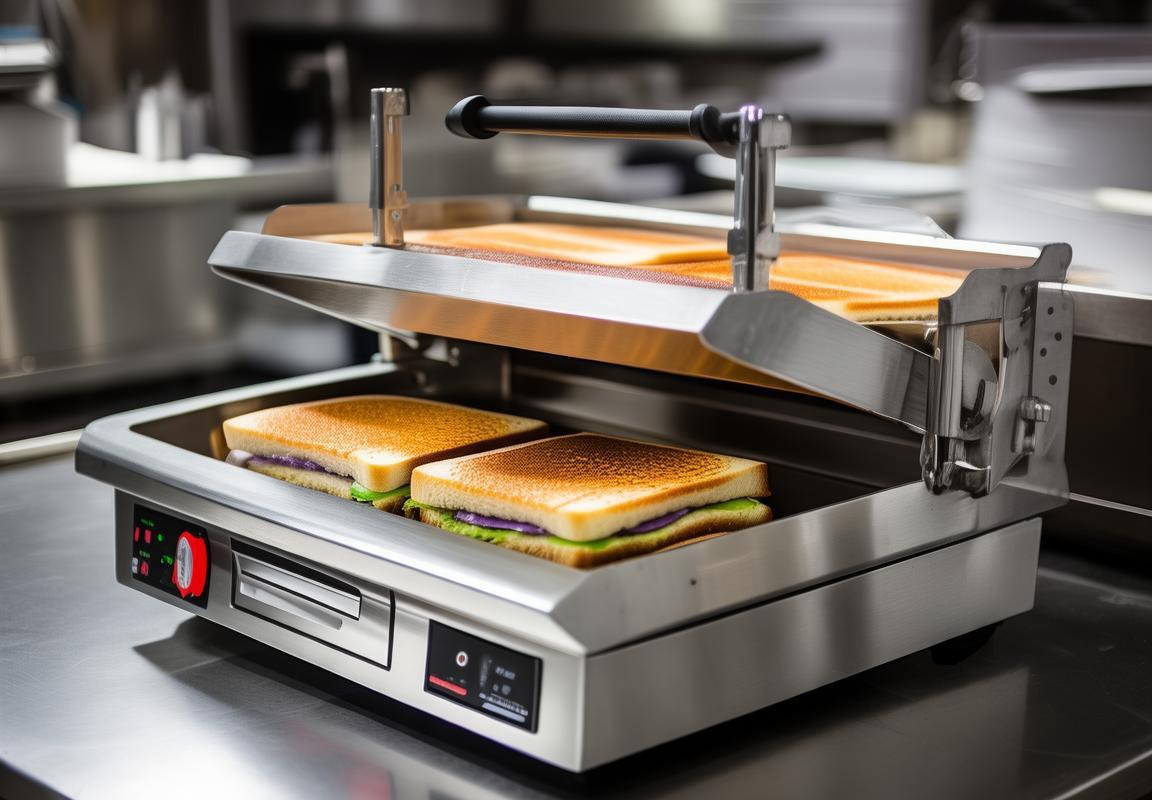
Perfecting the Art of Sandwich Making
In the world of culinary craft, the sandwich stands as a simple yet versatile masterpiece. Crafting the perfect sandwich is an art that combines fresh ingredients, thoughtful preparation, and a touch of creativity. Here’s how to elevate your sandwich-making skills to new heights:
The Bread Choice: The foundation of any great sandwich lies in the bread. Opt for a high-quality loaf that complements the flavors of your fillings. Artisan breads with a nice crust and a soft interior offer the perfect texture. Consider the type of bread based on the sandwich style you’re aiming for—brioche for a rich, soft texture, sourdough for a tangy bite, or even ciabatta for a more rustic feel.
Balancing Flavors: A well-balanced sandwich isn’t just about having a lot of ingredients; it’s about how those ingredients interact. Start with a savory base, like a grilled cheese or ham and cheese, and then layer in ingredients that complement but don’t overpower the main flavors. Think about adding lettuce for crunch, tomato for freshness, and condiments like mustard, mayonnaise, or aioli for a creamy, tangy zing.
Proper Proportioning: Every ingredient should have its place and purpose. Avoid piling too much on your sandwich, as this can lead to a soggy, unappetizing mess. Layer your fillings evenly, ensuring that each bite is a harmonious blend of flavors and textures.
Temperature Matters: The temperature of your ingredients can significantly impact the sandwich’s overall experience. Cold cuts and cheeses can add a delightful coolness, while grilled or toasted bread brings a warm, comforting element. Experiment with different temperatures to see what works best for your palate.
Freshness is Key: The freshness of your ingredients is paramount. Use ripe tomatoes, crisp lettuce, and fresh herbs to bring out the best in your sandwich. Avoid using ingredients that have been stored for too long, as this can lead to a stale or off-tasting experience.
Condiments and Spices: Don’t underestimate the power of condiments and spices. A little bit of mayonnaise, Dijon mustard, or a sprinkle of pepper can transform a basic sandwich into a gourmet creation. Play around with different combinations to find what works for you.
Grilling for Extra Flavor: Grilling your bread or some of the fillings can add an incredible depth of flavor. A quick char on the grill can bring out the natural sweetness of onions or the smokiness of cheese. It’s a simple step that can make a big difference.
Layering Techniques: The way you layer your ingredients can greatly affect the sandwich’s structure. For instance, placing a slice of cheese between the ham and the bread can help keep the layers together and melt the cheese for a creamy, gooey center. Experiment with different layering techniques to see what works best for your desired outcome.
The Final Touch: Once all your ingredients are in place, give your sandwich a gentle press. This not only helps to seal in the flavors but also ensures that all the layers are well-combined. The press also adds a slight crispness to the bread, making for a satisfying crunch.
Portion Control: It’s easy to overdo it when it comes to sandwiches, but portion control is important. A well-sized sandwich should be satisfying without being too heavy. This way, you can enjoy your creation without feeling too full or overwhelmed.
Consistency in Craftsmanship: The art of sandwich making is as much about consistency as it is about creativity. Whether you’re making sandwiches for a café, a catering service, or just for yourself, maintaining a consistent approach to preparation and presentation will keep your customers or yourself coming back for more.
Remember, the art of sandwich making is not just about following a recipe; it’s about expressing your culinary personality. Whether you’re a purist or a creative experimenter, the key to perfection lies in the balance of flavors, textures, and temperatures. So, go ahead and let your taste buds guide you in crafting the ultimate sandwich masterpiece.

Versatility in the Kitchen
In today’s fast-paced culinary landscape, kitchen appliances are not just tools but versatile companions that can transform a space into a hub of creativity. The kitchen, once a place for simple cooking tasks, has evolved into a laboratory of flavors and textures. Here’s how the versatility of kitchen tools and appliances has reshaped the culinary experience:
The multifaceted countertop blender, once just for smoothies, now grinds coffee beans, makes soups, and even whips up dough for homemade bread. It’s a silent partner in the art of blending flavors and textures, ensuring that every dish is as smooth as a silk scarf and as rich as a velvety cappuccino.
The humble toaster oven, once a simple device for toasting slices of bread, has become a versatile appliance that can bake, broil, and even defrost. It’s the unsung hero of quick meals, allowing for perfectly toasted bagels, crispy vegetables, and even delectable baked goods that would take much longer in a conventional oven.
Microwaves have moved beyond reheating leftovers. They’re now the go-to for everything from defrosting meats to melting cheese for gooey grilled cheese sandwiches. The speed and convenience they offer mean you can prepare a meal in minutes, giving you more time to savor the results rather than the process.
The stand mixer, once a staple in commercial bakeries, has found its way into home kitchens. It’s not just for kneading dough; it’s a tool for making mayonnaise, whipped cream, and even emulsifying dressings. Its versatility extends to grinding spices and creating a variety of batters, from pancakes to cake batter.
The induction cooktop has revolutionized the way we heat our pans. Unlike traditional electric or gas burners, induction cooktops heat pots and pans directly, providing precise control over temperature. This means you can sear a steak to perfection or simmer a delicate sauce without the risk of burning or scorching.
In the realm of refrigeration, the fridge and freezer are no longer just storage units. They’re now equipped with features that help maintain the freshness of ingredients and even offer customizable settings for different types of food. The fridge’s crisper drawers are designed to keep produce crisp for longer, while the freezer’s adjustable temperature settings ensure that frozen goods are stored at the ideal temperature.
The kitchen knife has evolved from a basic cutting tool to a collection of specialized blades that cater to every culinary need. From the sharp precision of a chef’s knife to the versatility of a santoku or the delicate slicing of a paring knife, the right tool for the job is always at hand.
The countertop juicer has transformed from a bulky appliance into a sleek, efficient machine that extracts the most juice from fruits and vegetables. It’s not just for making fresh juice; it’s also perfect for making nut butters, baby food, and even natural face masks.
The slow cooker, once a weekend-only appliance, is now a weekday essential. It allows for hands-free cooking, allowing you to throw in ingredients in the morning and come home to a warm, hearty meal. Its versatility means you can cook everything from stews to chili to desserts, all while you’re off doing other things.
The outdoor grill, once a summer pastime, has become a year-round staple. With various attachments and cooking surfaces, it’s not just for burgers and hot dogs. You can smoke meats, bake bread, and even sear fish on an outdoor grill, turning your backyard into a mini restaurant.
The kitchen has become a canvas for culinary artisans, with tools and appliances that can perform a myriad of tasks. From the precision of a digital thermometer to the all-purpose nature of a cast iron skillet, each tool plays a crucial role in the grand tapestry of cooking. Whether you’re a seasoned chef or a home cook, the versatility of these tools means that the kitchen is a place of endless possibilities, where the only limit is your imagination.
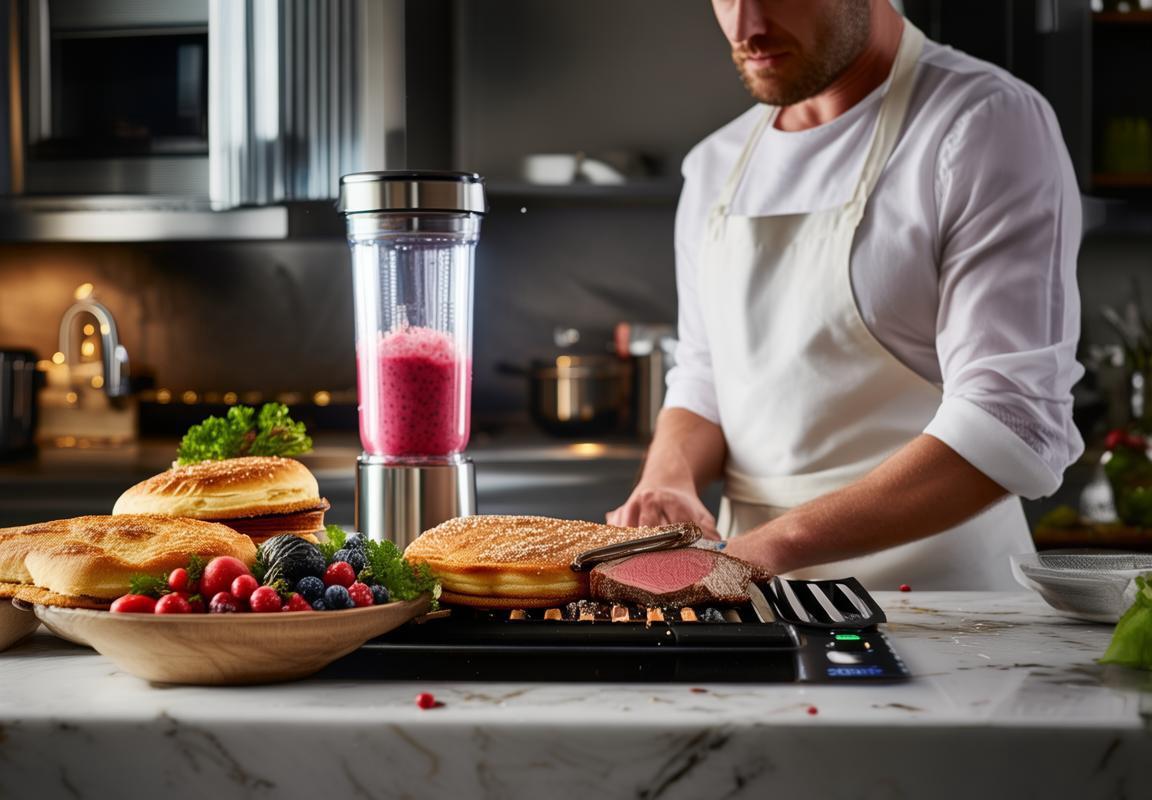
User-Friendly Design and Maintenance
In today’s fast-paced culinary landscape, the design and maintenance of kitchen appliances play a crucial role in ensuring efficiency and longevity. A user-friendly design is not just about aesthetics; it’s about streamlining operations and reducing the learning curve. Here’s a closer look at the user-friendly aspects of kitchen appliances, with a specific focus on sandwich presses.
The layout of controls is often the first thing that catches a user’s eye. Modern sandwich presses, for instance, feature intuitive interfaces with clearly labeled buttons and dials. No longer do you need to fumble through complex settings to achieve the perfect sandwich. The controls are designed to be straightforward, allowing even the busiest chefs to get to work without hesitation.
Safety features are another hallmark of user-friendly design. Modern sandwich presses come with safety interlocks that prevent the appliance from operating unless the lid is securely closed. This not only ensures that the user is protected from hot surfaces but also guarantees that the sandwich is evenly cooked. The inclusion of cool-touch handles and surfaces further adds to the safety aspect, making the appliance suitable for use in busy kitchen environments.
Ease of use extends beyond safety and simplicity of controls. The design of the sandwich press often includes features like non-stick surfaces that reduce the need for greasing and make cleanup a breeze. The removable parts, such as the press plates and drip trays, are designed to be dishwasher safe, saving time and effort in the cleaning process. This thoughtful design allows users to spend more time on creating culinary masterpieces and less time on maintenance.
In the realm of maintenance, the construction of the sandwich press is key. High-quality materials used in the manufacturing process not only enhance the durability of the appliance but also contribute to its ease of maintenance. For example, stainless steel components are not only resistant to corrosion but also easy to clean. The absence of sharp edges and corners minimizes the risk of accidents during cleaning, making the appliance suitable for all skill levels.
Another aspect of user-friendliness is the appliance’s footprint. Sandwich presses are designed to be compact, taking up minimal counter space. This is particularly beneficial in kitchens where every inch counts. The compact size also makes it easy to store away when not in use, ensuring that the workspace remains organized and clutter-free.
The inclusion of features like adjustable heat settings is a nod to user-friendliness. Not all sandwiches are made the same, and with adjustable heat, users can tailor the cooking temperature to their preference. Whether you prefer a toasted sandwich with a slight crunch or a melty, soft-grained masterpiece, the ability to adjust the heat ensures that every sandwich is cooked to perfection.
In terms of energy efficiency, user-friendly designs often incorporate features that make appliances more sustainable. Modern sandwich presses are designed to use energy wisely, heating up quickly and maintaining the desired temperature efficiently. This not only saves on energy costs but also reduces the environmental impact of the appliance.
Maintenance is also about the longevity of the appliance. User-friendly designs often come with detailed care instructions and troubleshooting guides. These resources empower users to address common issues on their own, without the need for professional assistance. When something does go wrong, the design of the sandwich press should allow for easy access to parts for repair or replacement.
Lastly, the aesthetic appeal of a sandwich press should not be overlooked. A well-designed appliance can be a beautiful addition to any kitchen, providing both functionality and visual appeal. The color, finish, and overall look of the sandwich press should be in harmony with the rest of the kitchen decor, making it a joy to use every day.
In conclusion, a user-friendly design in a sandwich press, or any kitchen appliance, is about creating a product that is intuitive, safe, durable, and efficient. It’s about reducing the stress of cooking and maintenance, allowing the user to focus on the joy of creating delicious meals. With these considerations in mind, the sandwich press becomes not just a tool, but an extension of the user’s culinary skills.
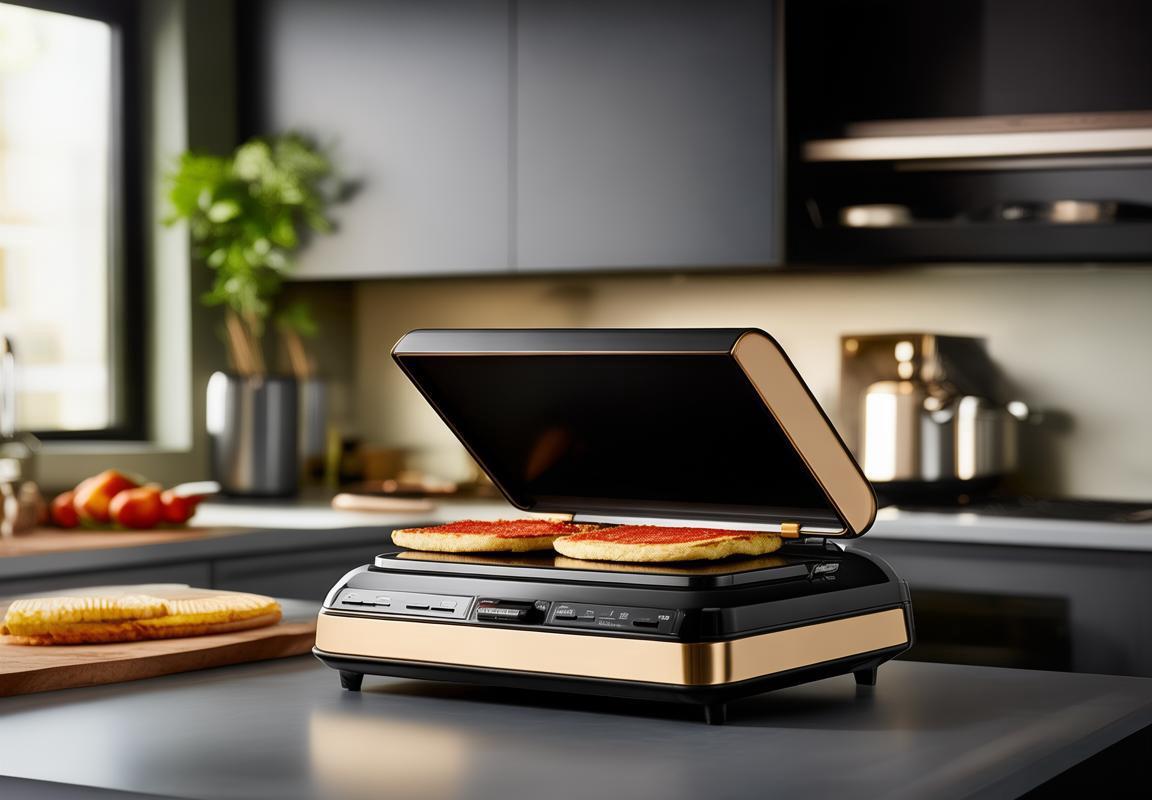
The Impact on Foodservice Industry
In the bustling world of foodservice, the introduction of user-friendly kitchen appliances has revolutionized the way chefs and restaurant staff operate. These innovations not only streamline processes but also enhance the quality and consistency of dishes served. The NSF approved commercial sandwich press is no exception, and its impact on the foodservice industry is profound.
The sandwich press, with its simple yet effective design, has become a staple in many commercial kitchens. Its ability to uniformly toast bread and melt cheese has elevated the humble sandwich to a culinary art form. This shift has several implications for the industry.
For one, the sandwich press has expanded the menu options for restaurants. Chefs can now experiment with different breads, fillings, and toppings, knowing that the press will deliver consistent results. This versatility allows for the creation of signature sandwiches that can become a draw for customers, differentiating one establishment from another.
Moreover, the ease of use of the sandwich press means that more staff can be trained to prepare sandwiches, reducing the reliance on specialized sandwich makers. This democratization of skills allows for a more efficient use of labor, as various kitchen staff can step in to handle sandwich orders during peak times.
The consistency achieved by the sandwich press is another key impact on the foodservice industry. Consistency is crucial for customer satisfaction, as patrons expect the same level of quality each time they visit a restaurant. The press ensures that every sandwich is toasted to perfection, with the cheese melted just right, every time.
In the realm of health and safety, the NSF approval carries significant weight. The certification guarantees that the sandwich press meets stringent health standards, which is critical in the foodservice industry. This not only protects the customers from potential health hazards but also provides peace of mind for restaurant owners and managers.
The sandwich press has also influenced the way foodservice operators manage their inventory. With the ability to produce a high volume of sandwiches quickly, restaurants can reduce waste by using fresh ingredients without the fear of spoilage. This efficient use of resources is a testament to the press’s role in sustainable foodservice practices.
Additionally, the sandwich press has become a symbol of innovation in the foodservice industry. It represents the kind of technology that can adapt to changing consumer preferences and market trends. As the demand for fast, convenient, and high-quality food continues to grow, the sandwich press stands as a testament to the industry’s ability to evolve and meet these demands.
In terms of customer experience, the sandwich press has played a part in creating a more engaging and interactive dining experience. The sight of a sizzling sandwich being pressed to perfection can be a visual treat for customers, adding to the overall ambiance of a restaurant. This visual cue can also serve as a subtle reminder of the freshness and quality of the food being served.
Furthermore, the sandwich press has contributed to the rise of “fast-casual” dining concepts. These establishments combine the speed of fast food with the quality and customization of casual dining. The sandwich press is a key player in this model, allowing for the quick preparation of made-to-order sandwiches that cater to individual tastes.
The impact of the sandwich press on the foodservice industry is not just limited to the operational side. It has also influenced the way restaurants think about their branding and marketing. With the ability to offer unique and high-quality sandwiches, restaurants can craft a narrative around their food that resonates with customers, setting them apart from competitors.
In conclusion, the NSF approved commercial sandwich press has had a multifaceted impact on the foodservice industry. From enhancing menu options and labor efficiency to improving customer satisfaction and sustainability, this simple kitchen appliance has become a cornerstone of modern foodservice operations. Its presence in commercial kitchens is a testament to the power of innovation and the continuous quest for excellence in the culinary world.
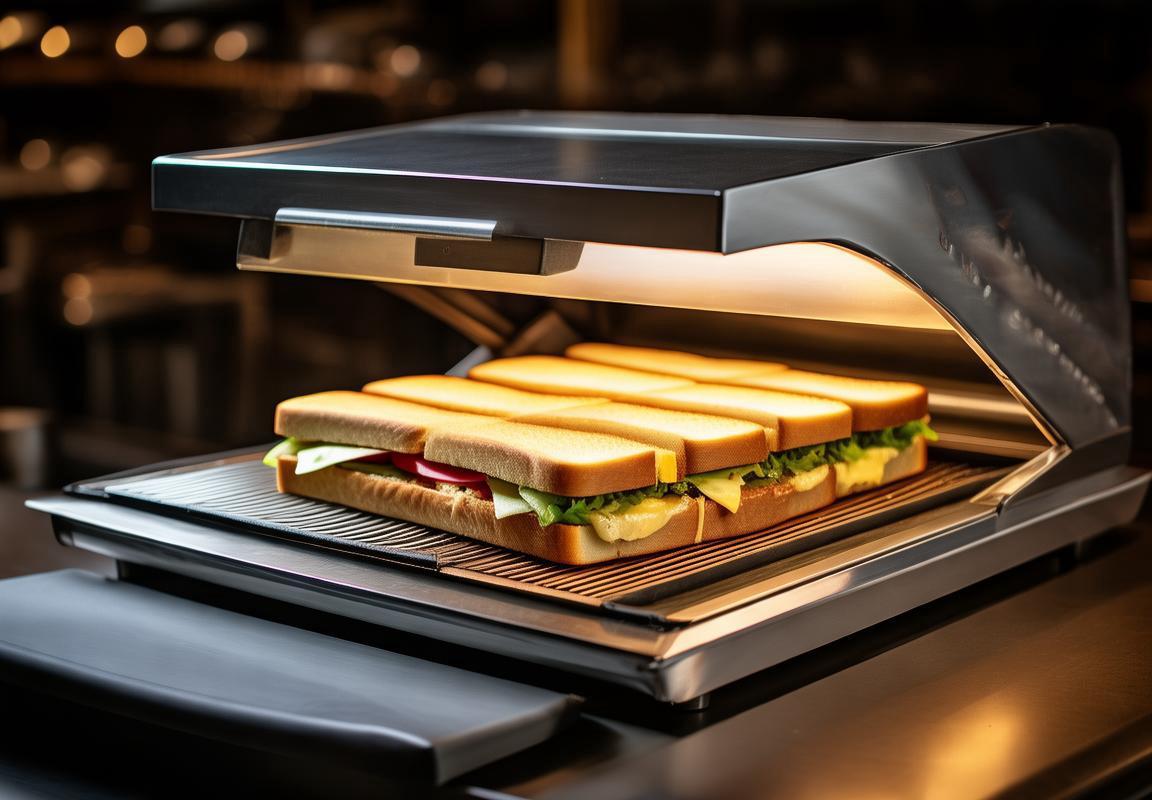
Top Reasons to Choose an NSF Approved Commercial Sandwich Press
In today’s fast-paced world, the demand for efficient and reliable foodservice solutions is at an all-time high. An NSF approved commercial sandwich press stands out as a game-changer for several compelling reasons. From ensuring food safety to enhancing customer satisfaction, here’s why opting for an NSF certified sandwich press is a decision that pays off.
Safety and Compliance: Ensuring the Highest StandardsSafety is paramount in the foodservice industry, and an NSF approved commercial sandwich press is a testament to that commitment. These presses undergo rigorous testing to meet strict safety standards set by the National Sanitation Foundation (NSF), an independent organization that ensures products meet health, safety, and environmental standards. By choosing an NSF approved model, businesses can rest assured that their equipment is not only safe to use but also compliant with health codes and regulations.
Consistent Quality: The Key to Repeat BusinessConsistency is crucial in the foodservice industry, and an NSF approved sandwich press can help achieve it. These presses are designed to deliver uniform results, ensuring that every sandwich is cooked to perfection. Whether it’s maintaining the right temperature or pressing the bread evenly, these machines are engineered to provide consistent quality, which in turn leads to higher customer satisfaction and repeat business.
Time Efficiency: Streamlining Kitchen OperationsTime is a valuable commodity in any kitchen, and an NSF approved sandwich press can significantly cut down on prep time. With its ability to cook sandwiches quickly and efficiently, this equipment allows kitchen staff to focus on other tasks, reducing wait times for customers. The streamlined process not only improves productivity but also allows for a more organized and efficient kitchen operation.
Ease of Cleaning and MaintenanceMaintaining cleanliness in a kitchen is essential for both food safety and operational efficiency. NSF approved commercial sandwich presses are designed with ease of cleaning in mind. Their surfaces are made from non-porous materials that resist bacteria growth, and many models come with removable parts for quick and thorough cleaning. This not only reduces the risk of cross-contamination but also makes maintenance a breeze, saving time and effort for kitchen staff.
Versatility in Menu OfferingsThe ability to offer a variety of menu items is a key factor in attracting and retaining customers. An NSF approved sandwich press is incredibly versatile, allowing for the creation of a wide range of sandwiches, from classic ham and cheese to gourmet options. Its even heat distribution ensures that fillings are cooked to the perfect temperature, and its adjustable settings accommodate different types of bread and ingredients. This versatility opens up a world of possibilities for chefs and kitchen managers looking to diversify their offerings.
Cost-Effective InvestmentWhen considering the purchase of commercial kitchen equipment, cost is often a significant factor. An NSF approved sandwich press is a cost-effective investment that pays for itself over time. Its durability and reliability mean that it will last for years, reducing the need for frequent replacements. Additionally, the efficiency and consistency it brings to the kitchen can lead to savings in labor and food waste, contributing to the overall financial health of the business.
Brand Reputation and TrustIn the foodservice industry, brand reputation is everything. By using NSF approved equipment, businesses signal to their customers that they prioritize quality and safety. This can build trust and credibility, especially among health-conscious consumers. A positive reputation for using high-quality, reliable equipment can set a business apart from the competition and attract a loyal customer base.
Environmental ResponsibilityThe environmental impact of foodservice operations is a growing concern. NSF approved sandwich presses are often energy-efficient, consuming less power than their counterparts. This not only reduces operational costs but also contributes to a greener kitchen and a smaller carbon footprint. In an era where sustainability is a key consideration for consumers, investing in eco-friendly equipment can be a significant selling point.
Customer Experience EnhancementUltimately, the success of any foodservice establishment hinges on customer satisfaction. An NSF approved commercial sandwich press can greatly enhance the customer experience by providing hot, freshly cooked sandwiches consistently. This focus on quality and efficiency can lead to happier customers, who are more likely to recommend the establishment to others, fostering word-of-mouth marketing.
In conclusion, the choice to invest in an NSF approved commercial sandwich press is a multifaceted decision that touches on safety, quality, efficiency, and sustainability. The benefits it brings to the foodservice industry are numerous, from ensuring compliance and maintaining a high standard of food quality to streamlining operations and enhancing the overall customer experience. With so much to offer, it’s clear why this equipment is a top choice for businesses looking to elevate their foodservice offerings.
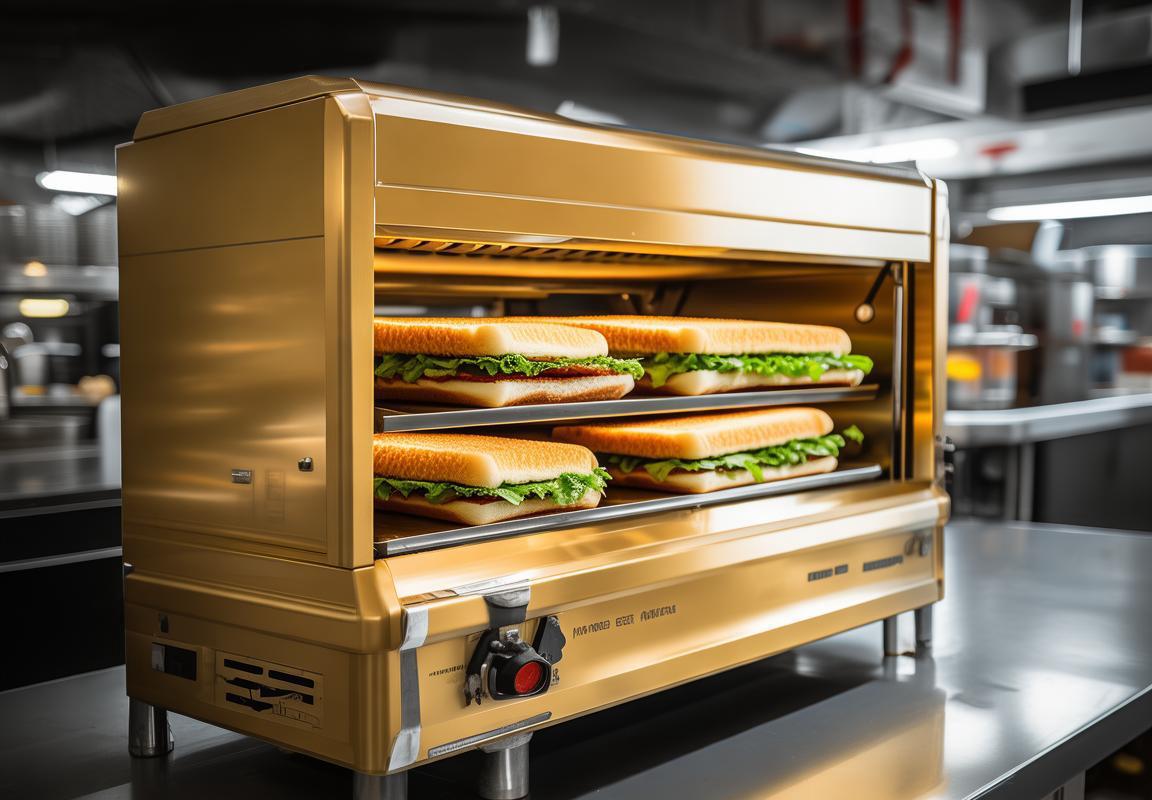
Final Thoughts: Investing in Quality for Your Business
In the bustling world of foodservice, where efficiency meets quality, investing in the right equipment can make all the difference. An NSF approved commercial sandwich press isn’t just a tool; it’s a statement of commitment to excellence. Here are a few reasons why opting for such a press is a smart business move:
An NSF approved commercial sandwich press is a testament to safety and reliability. The National Sanitation Foundation (NSF) is a globally recognized independent organization that sets standards for public health and safety. By adhering to these stringent guidelines, the press ensures that your kitchen operates with the highest level of hygiene and safety, which is crucial for maintaining customer trust and compliance with health codes.
The convenience factor of an NSF approved sandwich press is undeniable. Designed with the busy kitchen in mind, these presses are engineered to streamline the sandwich-making process. From even heating to consistent pressing, these units help reduce the time it takes to prepare sandwiches, allowing your staff to focus on other aspects of service.
The versatility of an NSF approved commercial sandwich press is a game-changer. While it’s perfect for crafting classic sandwiches, these presses can also handle a variety of other tasks. From grilling burgers to melting cheese on toasted subs, the possibilities are endless. This adaptability means you can offer a wider range of menu items without the need for multiple specialized appliances.
Quality ingredients and precise cooking are the cornerstones of great sandwiches. An NSF approved press ensures that every sandwich is cooked to perfection, with the right amount of heat and pressure. This consistency is key to building a reputation for delicious, high-quality food, which can lead to repeat customers and positive word-of-mouth referrals.
In the competitive foodservice industry, the appearance of your product can make or break a sale. An NSF approved sandwich press not only guarantees the quality of the food but also the presentation. The even browning and crisp texture that these presses provide can elevate the visual appeal of your sandwiches, making them more enticing to customers.
Maintaining a high standard of food safety is not just about avoiding fines; it’s about protecting your customers’ health. An NSF approved commercial sandwich press is designed with safety features that minimize the risk of cross-contamination and foodborne illnesses. This peace of mind is invaluable, especially in the wake of health scares that can tarnish a restaurant’s reputation.
The cost of equipment can be a significant investment, but an NSF approved commercial sandwich press offers long-term savings. These presses are built to last, with durable materials and components that can withstand the rigors of a commercial kitchen. By choosing a high-quality press, you’re making a wise investment that will pay off in the form of reduced maintenance costs and a longer lifespan.
In the world of foodservice, innovation is key to staying ahead of the curve. An NSF approved sandwich press often comes with cutting-edge features that can give your establishment a competitive edge. From adjustable heat settings to non-stick surfaces that make cleaning a breeze, these presses are designed to enhance the efficiency and quality of your food preparation.
The customer experience is everything in the foodservice industry. An NSF approved commercial sandwich press contributes to a positive dining experience by delivering consistently excellent sandwiches. When customers know they can rely on the quality of the food they’re served, they’re more likely to return and recommend your establishment to others.
As a business owner, your goal is to maximize profitability while minimizing risks. An NSF approved sandwich press helps you achieve both. By ensuring food safety, reducing downtime, and enhancing the quality of your product, these presses contribute to a more efficient and profitable operation.
In conclusion, choosing an NSF approved commercial sandwich press is a strategic decision that aligns with the core values of any successful foodservice business. It’s an investment in quality, safety, and customer satisfaction that can lead to long-term success and a reputation for excellence in the industry.